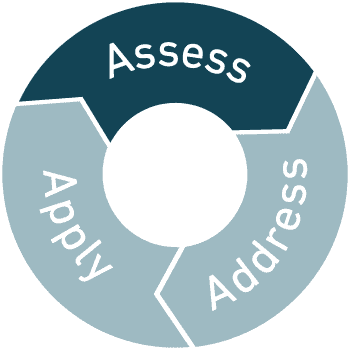Reframing Fitness for Real Life with GMB’s Approach to Physical Autonomy
Nike says, “If you have a body, you’re an athlete.”
At first blush, that sounds empowering, but it’s also complete BS.
Worse, it sets up false expectations that lead to poor decisions, unnecessary pressure, and wasted energy that don’t actually benefit you.
Of course, some people are athletes.
We’ve worked with clients competing at all levels in just about any sport or activity you can name. But the vast majority of people we work with are not athletes.
And that’s actually a good thing.
The problem is that we see videos of people lifting, flipping, sprinting, and competing at high levels. Because everything is online now, it creates the illusion that we should all be training like that too.
One of the things that used to separate athletes from the rest of us was visibility—athletes were on TV, competing in major events. Now, everyone who films their deadlifts in a garage gym can broadcast it to the world, making it feel like athletic training is universal.
But it’s not. And for most people, it’s actually not helpful to train like an athlete.
“The notion that we all have to be athletes actually puts a lot of undue pressure on us.”
What Actually Makes Someone an Athlete?
So what does it mean to be an athlete? Does it mean you’re not serious about training if you’re not one? Does it mean you’re not good enough? No. It just means that your entire life doesn’t revolve around training.
Athletes train for competition. Their workouts, recovery, diet, and schedule are all structured toward winning.
They don’t get to skip workouts because they’re tired or busy. Their social events, meals, and free time all have to align with whether it helps or hurts their performance.
They push their limits to the point that breaking down is part of the process.
And they have access to professional support—coaches, therapists, nutritionists, and recovery specialists—because their performance depends on it.
If you’re not doing all that, you’re not an athlete.
And that’s a good thing because it means you have options for how you train and live your life.
The Downsides of Identifying as an Athlete
The All-or-Nothing Trap
This mindset often leads to burnout, injury, and frustration because it assumes that all training should be optimized for performance instead of personal enjoyment or longevity.
The Fitness Industry Cash Grab
If you believe you must train like an athlete, the fitness industry loves you. Now, you need the athlete’s supplements, gear, recovery devices, and overpriced coaching plans. The worst part? These things aren’t made for you. They’re made for people with completely different goals and needs—but you’re told you need them anyway.
Losing the Joy of Movement
When training becomes about winning, progressing, and pushing harder, you can lose sight of why you started. If you train only for performance, you don’t get to just enjoy the process of moving, getting stronger, and feeling good. But if you let go of the “athlete” label, you get to train on your own terms. You get to do what’s best for you, without the pressure of fitting into a performance-driven mold.
The Alternative: Training for Your Own Life
Letting go of the athlete identity means you can start asking: What do I actually want out of my training?
- Do you want to move well and feel good?
- Stay active without pain?
- Be strong enough for daily life?
These are all great goals, and they don’t require an athlete’s lifestyle. Not being an athlete gives you freedom.
A Framework to Train Smarter, Not Harder
 At the heart of all our programs is the AAA Framework:
At the heart of all our programs is the AAA Framework:
- Assess – Identify what you need, not what an athlete needs.
- Address – Improve weak points with focused, intentional training.
- Apply – Use your physical skills in daily life, hobbies, and activities in a way that works for you.
This approach lets you train effectively without feeling like you have to push to exhaustion every session.
The Power of “Good Enough” in Your Training
You don’t need to train like an athlete to be fit, capable, and pain-free.
In fact, you shouldn’t. The best training for you is the kind that keeps you moving well for years, not just getting stronger for a competition.
You don’t need to be an athlete to be strong, healthy, and capable.
Your training should support your life, and give you freedom, long-term sustainability, and more enjoyment in movement.
Build a Consistent Training Habit With a Foundation in the Basics
With Elements, you’ll build a foundation of strength, flexibility, and control using the Bear, Monkey, Frogger, and Crab.
If you’re ready to train in a way that works for you, without the pressure of extreme performance standards, Elements is a smarter way to build strength, mobility, and control for real life.






